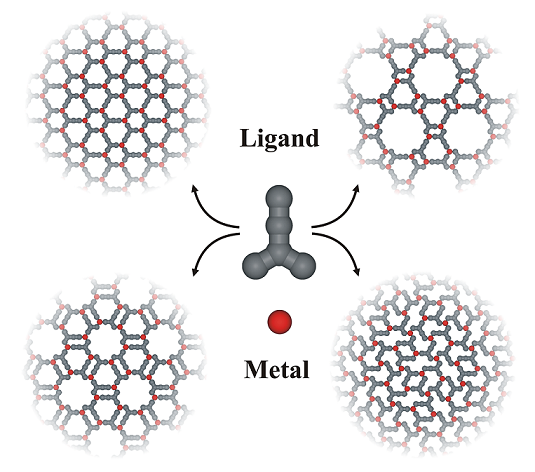The rational fabrication of low-dimensional materials with a well-defined topology and functions is an incredibly important aspect of nanotechnology. In particular, the on-surface synthesis (OSS) methods based on the bottom-up approach enable facile construction of sophisticated molecular architectures unattainable by traditional methods of wet chemistry. Among such supramolecular constructs especially interesting are surface-supported metal-organic networks (SMONs), composed of low-coordinated metal atoms and π-aromatic bridging linkers differing in size, shape and functionalization scheme. In this work, the lattice Monte Carlo (MC) simulation technique was used to extract the chemical information encoded in a family of Y-shaped positional isomers coadsorbed with trivalent metal atoms on a flat metallic surface with (111) geometry. For this purpose the investigated tritopic molecules/metal atoms were carefully mapped on a triangular lattice as interconnected/isolated segments with appropriatelly embedded anisotropic interactions. Depending on the intramolecular distribution of active centers (functional groups) within the simulated molecular bricks, we observed the metal-directed self-assembly of two-dimensional (2D) openwork patterns, aperiodic mosaics and metal-organic ladders. The obtained theoretical findings could be especially relevant for the scanning tunneling microscopy (STM) experimentalists interested in a surface-assisted construction of complex nanomaterials stabilized by directional coordination bonds.

